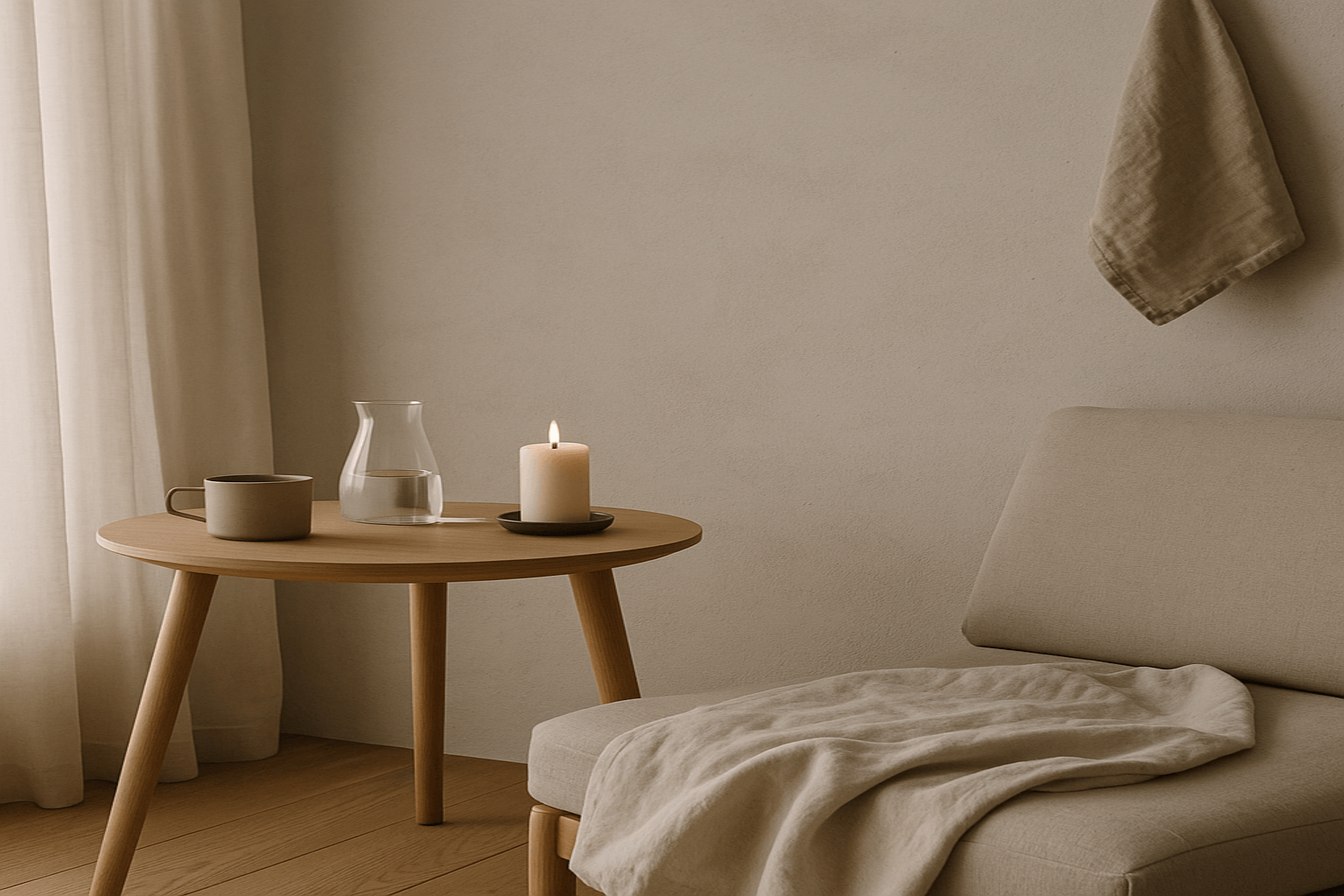What Are In-Between Spaces?
In design, we often focus on the “main” areas — the sofa, the table, the centerpiece. But what gives a space rhythm and atmosphere are often the in-between places.
These are the:
-
Corners
-
Transitions between rooms
-
Empty stretches of wall
-
Spaces under, beside, or around your furniture
In minimalist homes, these in-between areas are not accidental. They’re intentional pauses — spaces of rest, breath, and flow.
1. Why the Gaps Matter
In-between spaces are the architectural equivalent of white space on a page. They:
-
Give your eye a place to rest
-
Allow contrast and definition
-
Let light, air, and movement pass through
-
Offer balance to “filled” zones of the room
Without them, a space can feel dense or overworked, even if nothing is technically “cluttered.”
2. Designing the Negative, Not Just the Positive
Minimalist design isn’t just about choosing the right pieces — it’s about shaping the space around them.
Try this:
-
Pull furniture slightly away from walls to create breathing room
-
Leave a gap between a pendant light and the furniture below
-
Intentionally leave a corner untouched
These choices create flow and bring awareness to what’s there — and what isn’t.
3. In-Between Spaces = Potential Spaces
These areas don’t always need to do something. But when they’re designed with care, they can become:
-
A quiet spot to sit and reflect
-
A landing zone for light and shadow
-
A visual moment that balances everything else
Sometimes, a bare corner is more powerful than a filled shelf — because it invites stillness, not stimulation.
4. Transitions Shape Experience
Pay attention to the areas you pass through:
-
The space between your kitchen and dining area
-
The few steps from the hallway into your living room
-
A visual “break” between two contrasting textures or materials
Designing these thresholds softly and cleanly helps you feel the flow of your home, not just see it.
5. Not Every Space Needs a Job
Minimalism honors presence. Not every square foot needs to be maximized or monetized. Some spaces exist simply to exist.
Resist the pressure to “complete” every area. Instead, notice:
-
Where light naturally pools
-
What areas feel spacious even when unused
-
How your body responds to open space
Design is just as much about sensation as it is about structure.
Final Thought
In-between spaces are where design breathes. They're the pauses between sentences — the rests in music — the moments when your home stops performing and simply is.
In minimalist design, less doesn’t mean lack. It means giving attention to what most people overlook.
















